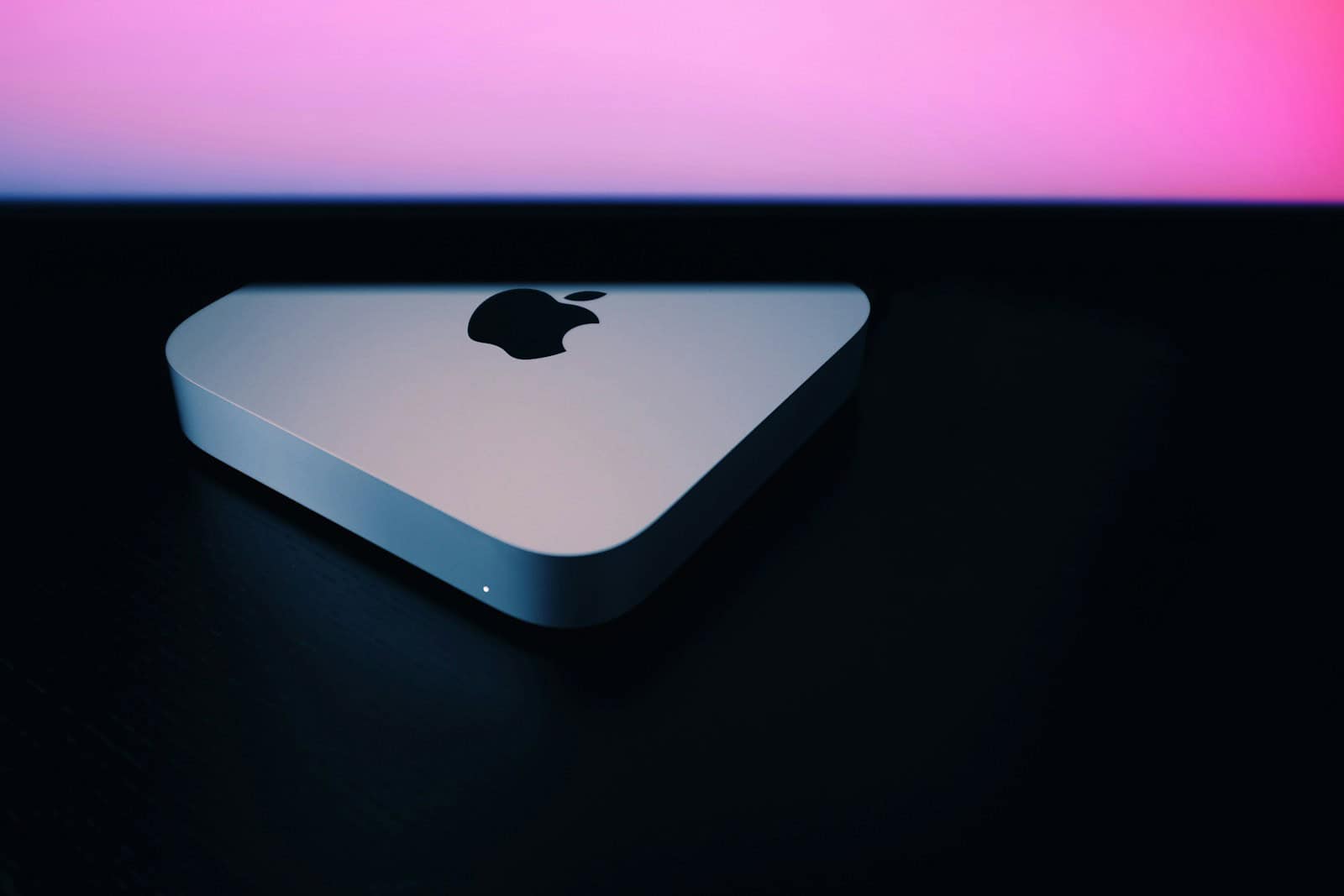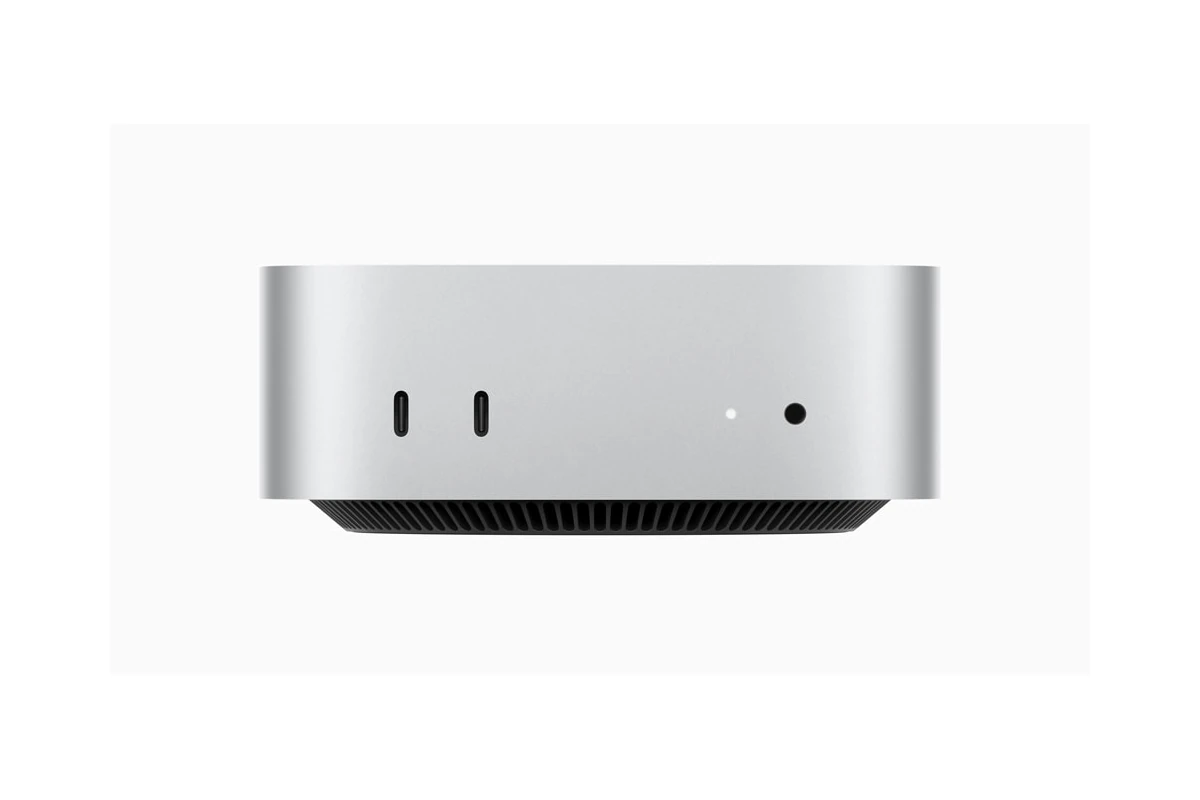Apple’s Mac mini has received a major overhaul, and it’s turning heads not just for its compact power, but also for some of the best prices we’ve ever seen. If you’re considering upgrading your desktop setup, here’s why the new Mac mini lineup—especially the M4 and M4 Pro models—might be the most compelling option right now.

Check the latest Mac Mini prices on Amazon here: https://amzn.to/3ZcbGUO
M4 & M4 Pro Mac mini: Compact Form, Colossal Power
The October 2024 refresh introduced two powerhouse configurations: the Mac mini with M4 and the Mac mini with M4 Pro. These machines bring desktop-grade performance into a device that’s now just a 5×5-inch square—significantly more compact than any prior Mac mini.
- M4 Base Model:
Equipped with a 10-core CPU, 10-core GPU, and 16GB of unified memory—a leap from the prior 8GB standard. With a 256GB SSD, it starts at $599, making it an excellent value for developers, content creators, and power users on a budget. - M4 Pro Variant:
This version ups the ante with up to a 14-core CPU, 20-core GPU, and 64GB RAM support. It also includes Thunderbolt 5 ports, supporting even faster data transfer and advanced external display setups. Pricing starts at $1,399—a fair investment for professional workflows.
Other standout features include a redesigned thermal architecture, ensuring quiet performance under load, front-facing USB-C ports for convenience, and even a 3.5mm headphone jack—a small but appreciated touch for legacy audio compatibility.
Unbeatable Deals in June 2025
If you’re looking for peak performance without breaking the bank, the Mac mini deals available now are worth your attention:
| Configuration | Regular Price | Current Price | Savings |
|---|---|---|---|
| M4, 16GB RAM, 256GB SSD | $599 | $500 | $99 off |
| M4, 24GB RAM, 512GB SSD | $999 | $842 | $157 off |
| M4 Pro, 24GB RAM, 512GB SSD | $1,399 | $1,286 | $113 off |
These discounts are available at major retailers including Amazon, Best Buy, and B&H Photo, making it a perfect time to upgrade or build a new workstation.
Built for Apple Intelligence

The Mac mini with M4 is future-ready. It’s one of the first Macs built specifically with Apple Intelligence in mind—Apple’s new AI framework rolling out with macOS 26 “Tahoe” later this year.
What does that mean in practice?
- Advanced Siri that’s more contextual and capable
- Genmoji: Custom AI-generated emoji-style avatars
- Image Playground: Create visuals from prompts
- Smart Summarization and Writing Tools across apps
These features are set to be part of macOS 26, which will debut at WWDC on June 9, 2025, and will lean heavily on the M4 chip’s Neural Engine for real-time performance.
Mac Mini M4 Specs
🖥️ Mac Mini (M4, 2024) – Base Model
- Chip: Apple M4
- CPU: 10-core (6 performance + 4 efficiency cores)
- GPU: 10-core integrated GPU
- Neural Engine: 16-core for machine learning and AI tasks
- RAM: 16GB unified memory (configurable to 24GB)
- Storage: 256GB SSD (up to 2TB configurable)
- Ports:
- 2 × Thunderbolt 4 / USB-C
- 2 × USB-A
- 1 × HDMI
- 1 × Gigabit Ethernet (10Gb optional)
- 1 × 3.5mm headphone jack
- Video Support:
- Up to two displays: 1 via Thunderbolt (6K @ 60Hz), 1 via HDMI (4K @ 60Hz)
- Wireless: Wi-Fi 6E and Bluetooth 5.3
- Size: New 5×5 inch ultra-compact design
- Cooling: Advanced quiet active cooling system
- macOS Compatibility: macOS Sonoma (macOS 26 “Tahoe” ready)
💼 Mac Mini (M4 Pro, 2024) – Higher-End Variant
- Chip: Apple M4 Pro
- CPU: Up to 14-core (10 performance + 4 efficiency cores)
- GPU: Up to 20-core integrated GPU
- Neural Engine: Enhanced 18-core
- RAM: 18GB, 36GB, or 64GB unified memory options
- Storage: 512GB SSD (up to 4TB configurable)
- Ports:
- 4 × Thunderbolt 5 / USB-C
- 2 × USB-A
- 1 × HDMI
- 1 × 10Gb Ethernet
- 1 × 3.5mm headphone jack
- Display Support:
- Up to 3 external displays: 2 via Thunderbolt (up to 6K) and 1 via HDMI (up to 8K @ 60Hz or 4K @ 240Hz)
- Wireless: Wi-Fi 6E and Bluetooth 5.3
- Build: Same compact 5×5 inch enclosure
- Thermals: Enhanced cooling system for Pro workloads
What’s Next: M5 Mac mini Rumors
While the M4 is still fresh, Apple’s silicon roadmap doesn’t rest. Early chatter from supply chain insiders and Reddit forums hints that the M5 Mac mini could arrive by late 2025 or early 2026. It’s expected to push the boundaries further, possibly introducing even greater AI integration, lower power consumption, and more customization options for enterprise deployments.
Should You Buy Now?
If you’re weighing your options between the Mac mini and other desktop Macs like the iMac, here’s the short answer:
If you already own a good monitor and peripherals, the M4 Mac mini gives you unbeatable value per dollar.
With top-tier performance, future-proof AI features, and major discounts currently live, this is arguably the best time ever to pick up a Mac mini. Whether you’re upgrading from Intel-based machines or just want an ultra-compact Mac that punches well above its size class, the latest Mac mini is a small device with big ambitions.
Mac Mini vs iMac
Choosing between a Mac mini and iMac can be tricky. Both offer Apple’s sleek design and powerful performance, but they serve different needs. The Mac mini delivers compact versatility while the iMac combines everything into one stunning package.
The Mac mini offers better value for your money with more configuration options and connectivity, while the iMac includes an excellent 4.5K display, speakers, and accessories right out of the box. When comparing the two, consider what you already own. If you have a great monitor, keyboard, and mouse, the Mac mini might be more cost-effective. If you want an all-in-one solution with less cable clutter, the iMac’s built-in display and components might justify its higher price tag.
Your desk setup, budget, and computing needs should guide your choice. The Mac mini takes up less space and works with any display, while the iMac creates a cohesive, ready-to-use experience with its striking screen and excellent speakers.
Here is a comparison table of the latest Mac mini (M4, 2024) vs the latest iMac (M3, 2023) models as of June 2025:
| Feature | Mac mini (M4, 2024) | iMac (M3, 2023) |
|---|---|---|
| Processor | Apple M4 / M4 Pro | Apple M3 |
| CPU Cores | Up to 10-core CPU (M4) / 14-core (M4 Pro) | 8-core CPU |
| GPU Cores | Up to 10-core GPU (M4) / 20-core (M4 Pro) | 10-core GPU |
| Memory (RAM) | 16GB (base) up to 64GB (M4 Pro) | 8GB (base) up to 24GB |
| Storage Options | 256GB to 2TB SSD | 256GB to 2TB SSD |
| Display | External display required | Built-in 24″ 4.5K Retina Display |
| Ports | USB-C, USB-A, HDMI, Ethernet, Thunderbolt 5 | 2–4 Thunderbolt / USB 4 ports, headphone jack |
| Form Factor | Small desktop box (5×5 inch redesign) | All-in-one with display and internals combined |
| Cooling | Advanced thermal system, fan-cooled | Fan-cooled |
| Touch ID | Via external Magic Keyboard with Touch ID | Built-in on Magic Keyboard |
| Camera | None built-in | 1080p FaceTime HD Camera |
| Speakers | None built-in | Six-speaker system with Spatial Audio |
| Use Case | Ideal for users with own peripherals / monitors | Great all-in-one for general home/office use |
| Base Price (USD) | $599 (M4), $1,399 (M4 Pro) | $1,299 |
Summary:
- Mac mini is best for users who already have a monitor and peripherals, want more configuration flexibility, or need more performance per dollar.
- iMac offers a seamless all-in-one experience with a premium display and built-in peripherals, ideal for general users and creatives not needing M4-level power.
Key Takeaways
- Mac mini provides more ports, configuration options, and value if you already own quality peripherals.
- iMac offers an all-in-one solution with a premium 4.5K display and excellent built-in speakers.
- Your desk space, existing equipment, and budget should determine which Mac desktop suits your specific needs.
Overview of Mac Mini and iMac
Apple’s desktop offerings serve different needs through distinct design approaches and target audiences. The Mac Mini and iMac represent two fundamentally different philosophies in desktop computing.
Design Philosophy
The Mac Mini embraces minimalism with its compact form factor. This small aluminum box measures just 7.7 inches square and 1.4 inches tall, making it Apple’s smallest desktop computer. Unlike the iMac, the Mac Mini doesn’t include a display, keyboard, or mouse.
This modular approach gives users freedom to choose their own peripherals. You can connect it to any monitor and use whatever keyboard and mouse you prefer. This flexibility is perfect for those who already own these accessories or want specific options.
The iMac takes the opposite approach with its all-in-one design. Everything you need comes in one sleek package. The current 24-inch model features a thin profile with the entire computer housed behind the display.
The iMac reduces desk clutter by eliminating extra cables and devices. It includes a built-in 4.5K Retina display, speakers, microphones, camera, and comes with a Magic Keyboard and Mouse.
Target User Demographics
The Mac Mini appeals to tech-savvy users who value customization. It’s ideal for those who already own quality displays or want specific monitor setups. Many professionals choose the Mac Mini for specialized workflows.
Content creators appreciate its power in a small footprint. The Mac Mini works well in server applications, media centers, and development environments. Its portability (weighing just over a kilogram) makes it suitable for those who need to move their setup occasionally.
The iMac targets users who want simplicity and an integrated experience. Families, students, and home offices benefit from its ready-to-use nature. Just plug it in and you’re ready to go.
Creative professionals who need color accuracy love the high-quality built-in display. The iMac also appeals to those who value aesthetics and want a complete package with matching accessories and excellent built-in speakers.
Hardware Specifications
Both the Mac mini and iMac offer powerful performance in different form factors. The Mac mini provides computing power in a compact box, while the iMac integrates its components behind a display.
Processor Performance
The latest Mac mini now features the M4 chip with a 10-core CPU that includes 4 performance cores and 6 efficiency cores. This represents a significant improvement over previous generations.
The iMac also uses the same M4 chip in its base model, offering identical processing power. Both devices use Apple Silicon, which replaced Intel processors in Apple’s lineup.
For users who need extra processing power, the Mac mini can be configured with the M4 Pro chip. This option provides a speed boost for intensive tasks like video editing and 3D rendering.
In benchmark tests, both devices perform similarly when equipped with the same chip. The thermal design of the iMac might allow for slightly better sustained performance during long workloads.
Memory and Storage Options
Memory options vary between these Mac models. The base Mac mini comes with 16GB of RAM, while the iMac includes a keyboard and mouse in addition to its built-in display.
Both devices can be configured with up to 24GB RAM in their base models. The Mac mini with M4 Pro can support up to 64GB RAM, making it better for professional workflows that require more memory.
Storage options start with 512GB SSD for both models. Users can upgrade to larger capacities, with 1TB SSD being a popular choice for those working with larger files.
The SSDs in both devices offer similar performance with read/write speeds exceeding 2,000 MB/s. Neither model offers user-upgradable storage, so choosing the right capacity at purchase is important.
Graphic Capabilities
The standard M4 chip in both devices includes a 10-core GPU capable of handling most everyday tasks and moderate gaming. The Mac mini with M4 Pro offers enhanced graphics performance for more demanding applications.
Both systems feature hardware-accelerated ray tracing capabilities, which improve the rendering of realistic lighting effects in games and 3D applications.
The iMac benefits from its built-in 24-inch 4.5K Retina display, which showcases graphics beautifully. The Mac mini requires a separate monitor but offers more flexibility with display choices.
For connectivity, the Mac mini provides HDMI output that supports up to 8K resolution. Both systems can drive multiple external displays, though the exact number depends on the specific model and chip configuration.
Display and Visual Experience
The display setup is one of the biggest differences between the Mac mini and iMac. This choice affects not only your visual experience but also your workspace setup and budget considerations.
Built-In Display Quality
The 24-inch iMac comes with a built-in 4.5K Retina display that offers stunning visual quality right out of the box. This screen delivers 4480 × 2520 resolution with support for billions of colors, making photos, videos, and text look incredibly sharp.
The display features True Tone technology that adjusts the color temperature based on your environment. This helps reduce eye strain during long work sessions.
Color options add personality to your workspace. The purple iMac has become particularly popular for those wanting a statement piece rather than just a computer.
The iMac’s display includes an anti-reflective coating that helps minimize glare in bright environments. This is a big plus for users working near windows or under bright lights.
External Display Support
The Mac mini requires a separate monitor purchase but offers much more flexibility. You can choose from various screen sizes, resolutions, and price points based on your specific needs.
The latest M4 Mac mini supports up to two displays simultaneously – one up to 6K and one up to 4K. This is perfect for multi-tasking professionals who need extended screen real estate.
Many users pair their Mac mini with 4K displays from manufacturers like LG, which offers excellent value compared to Apple’s own monitors.
The Mac mini setup allows for easy upgrades. When display technology improves, you can update just the monitor without replacing the entire computer.
Some professionals prefer using their existing monitors with a Mac mini rather than buying an all-in-one iMac. This flexibility can save money if you already own a quality display.
Software and Ecosystem
Both the Mac mini and iMac run on the same core software platform, but their physical designs create subtle differences in how you interact with apps and the overall system. Apple’s ecosystem integration works seamlessly across both devices with some minor distinctions worth noting.
Operating System Integration
The Mac mini and iMac both run macOS, Apple’s desktop operating system. Both computers offer identical system performance when configured with the same M-series chips. The latest M4 Mac models provide the same software experience regardless of form factor.
The main difference comes from the built-in hardware. The iMac includes a display with a camera and speakers ready for FaceTime and video conferencing. Mac mini users need to connect their own peripherals.
Setting up a new system is slightly more streamlined on iMac since everything is integrated. The mini requires connecting external components first.
Both systems benefit equally from Apple services like iCloud, AirDrop, and Handoff with iPhones and iPads. Software updates arrive simultaneously for both machines.
Applications and Software Compatibility
Mac mini and iMac support identical applications since they run the same macOS operating system. All Mac App Store apps work perfectly on both systems.
Professional software like Final Cut Pro, Logic Pro, and Adobe Creative Cloud perform based on the internal specs, not the form factor. Both systems support the same energy-efficient applications, though the Mac mini typically uses less power overall.
For those who need a complete package, the iMac offers built-in speakers that are optimized for Apple Music and other audio applications. Mac mini users must supply their own audio setup.
Web-based applications and browsers function identically on both systems. Safari, Chrome, and other browsers deliver the same experience regardless of which Mac you choose.
Peripheral and Expansion Options
When comparing the Mac mini and iMac, how you connect devices and expand your setup matters a lot. Each model offers different ways to add monitors, storage, and accessories.
Connectivity Options
The Mac mini provides more connection options than the iMac. The M4 Mac mini comes with a robust selection of ports, including multiple USB-C/Thunderbolt ports, USB-A, HDMI, and Ethernet. This flexibility lets users connect various displays and peripherals.
The iMac, while sleek, offers fewer ports. It typically includes several Thunderbolt/USB-C ports but lacks HDMI and has fewer USB-A connections. This might limit some setups without adapters.
For network connections, both offer Wi-Fi 6E and Bluetooth 5.3. The Mac mini includes Gigabit Ethernet standard, with an option to upgrade to 10GB Ethernet. The iMac also offers Ethernet, but it’s built into the power adapter rather than the computer itself.
Use with External Drives and Accessories
The Mac mini shines when it comes to using external drives and accessories. Without a built-in display, users can connect multiple monitors of their choice and position them as needed. This freedom extends to storage expansion through external drives.
For peripherals, the Mac mini requires you to supply your own keyboard, mouse, and monitor. While this adds to the initial cost, it allows for personal preference. You can use existing PC peripherals with a Mac mini, saving money if switching from Windows.
The iMac comes with Apple’s keyboard and mouse included, making it ready to use out of the box. However, this limits customization options for input devices without buying replacements.
Price and Value Proposition
When choosing between a Mac mini and iMac, the price difference and what you get for your money are key factors to consider. Both options have distinct advantages depending on your needs and existing setup.
Cost Analysis
The Mac mini starts at a much lower price point of $599 for the base M4 model, making it the more affordable entry into Mac desktop computing. This price doesn’t include a display, keyboard, or mouse, which you’ll need to purchase separately if you don’t already own them.
The iMac M4 starts at a higher price point but includes a stunning built-in 24-inch display and comes with a Magic Keyboard and Magic Mouse. When comparing total costs, a complete Mac mini setup with comparable peripherals can cost around $1,793, which is about $294 more than an iMac with similar specs.
For budget-conscious buyers who already own quality peripherals, the Mac mini offers significant savings. However, if starting from scratch, the price gap narrows considerably.
Long-Term Value
The Mac mini offers excellent flexibility for future upgrades. Users can keep their Mac mini while upgrading only the monitor, keyboard, or mouse as needed. This modular approach can extend the useful life of your investment.
The iMac provides exceptional value through its integrated design and premium display. Many users consider the iMac’s built-in screen among “the best monitors on the market,” which would cost significantly more if purchased separately.
Both systems offer similar processor options, with the Mac mini actually offering more processing power in its base model compared to the entry-level iMac. This means the Mac mini might maintain its performance edge longer for certain tasks.
The decision ultimately depends on whether you value the all-in-one convenience of the iMac or the flexibility and potentially lower initial cost of the Mac mini.
Product Lifecycle and Upgradeability
Mac Mini and iMac systems have significant differences in how long they last and how easily users can upgrade them. These differences affect both short-term satisfaction and long-term value.
Upgrade Paths
The Mac Mini offers more flexibility for upgrades compared to the iMac. With a Mac Mini, users can choose their own display and swap it out whenever needed. This means you can keep the same Mac Mini while upgrading to a better monitor later.
Mac Mini also has better storage options. Users can configure it with up to 8TB of storage compared to the iMac’s 2TB limit. Similarly, RAM can be expanded to 64GB on the Mac Mini.
External upgrades are simpler with the Mac Mini. Users can add:
- Multiple monitors
- External GPUs (on Intel models)
- Various peripherals
The iMac, being an all-in-one system, lacks this flexibility. When the display becomes outdated, the entire system might need replacement.
Future-Proofing Considerations
The Mac Mini typically offers better longevity than the iMac for several reasons. First, the Mac Mini design allows for easier cooling, which can extend component life. Second, when a component becomes outdated, only that part needs upgrading.
The Mini doesn’t receive updates as frequently as the iMac, which might seem like a disadvantage. However, this can be beneficial for business environments where hardware stability is important.
For power users, the Mac Studio provides an even more robust option with better performance and cooling than both the Mini and iMac. This makes it ideal for professionals who need maximum longevity from their investment.
When considering future needs, it’s worth noting that the Mac Mini’s modular nature allows it to adapt to changing requirements more easily than the iMac’s fixed configuration.
Frequently Asked Questions
Many buyers struggle with choosing between a Mac mini and an iMac. These questions address the key differences in specs, performance, and use cases that can help make this decision easier.
What are the key specification differences between a Mac mini and an iMac?
The Mac mini comes as a compact standalone computer without a display, keyboard, or mouse. It features Apple’s M-series chips, various RAM options, and multiple ports.
The iMac includes a built-in display, speakers, microphone, webcam, keyboard, and mouse in one package. The iMac excels by giving you everything you need in a single purchase.
Storage options are similar for both devices, with configurations from 256GB to 2TB SSD available.
How does the performance of the latest Mac mini compare to the current iMac?
Both devices use Apple’s M-series chips with similar performance benchmarks when comparing the same chip versions. The Mac mini can actually be configured to be more powerful than entry-level iMacs.
The main performance difference comes from cooling systems. The iMac’s larger chassis allows for better thermal management during intense tasks, which helps maintain peak performance longer.
Both computers handle everyday tasks like web browsing, document editing, and media consumption with ease.
In what scenarios is a Mac mini a better choice over an iMac?
The Mac mini shines in space-constrained environments due to its tiny footprint. It’s perfect for those who already own quality displays, keyboards, and mice.
For budget-conscious buyers, the Mac mini offers a lower entry price. Some users recommend the Mac mini with 16GB RAM and 1TB storage as a cost-effective solution.
The Mac mini works great as a home server, media center, or development machine where a display isn’t always needed.
What are the graphical capabilities of the Mac mini compared to the iMac?
Both computers use integrated graphics from their M-series chips. The higher-end models of both devices offer more GPU cores for better graphics performance.
The iMac benefits from its optimized display that’s calibrated to work perfectly with its internal graphics system.
For external displays, the Mac mini supports up to two displays (up to 6K resolution), making it suitable for multi-monitor setups. The iMac can support its built-in display plus one external monitor.
How does the upgradeability of a Mac mini differ from that of an iMac?
Neither device offers much upgradeability after purchase. RAM and storage are soldered to the motherboard in both machines.
The Mac mini has a slight advantage in flexibility since users can easily upgrade external components like monitors, keyboards, and mice at any time.
For both devices, it’s crucial to choose the right specifications at purchase time since internal upgrades aren’t possible.
What are the screen size options for iMac, and how does this affect a user’s decision compared to the screen-less Mac mini?
The current iMac comes with a 24-inch 4.5K Retina display. Previous 27-inch models have been discontinued but may still be available used or refurbished.
With a Mac mini, users have complete freedom to choose any display size, resolution, and quality level. This flexibility allows for finding a monitor with built-in speakers and camera that meets specific needs.
Display choice greatly impacts budget considerations. Premium monitors can quickly make a Mac mini setup more expensive than an iMac, while budget displays can create significant savings.







